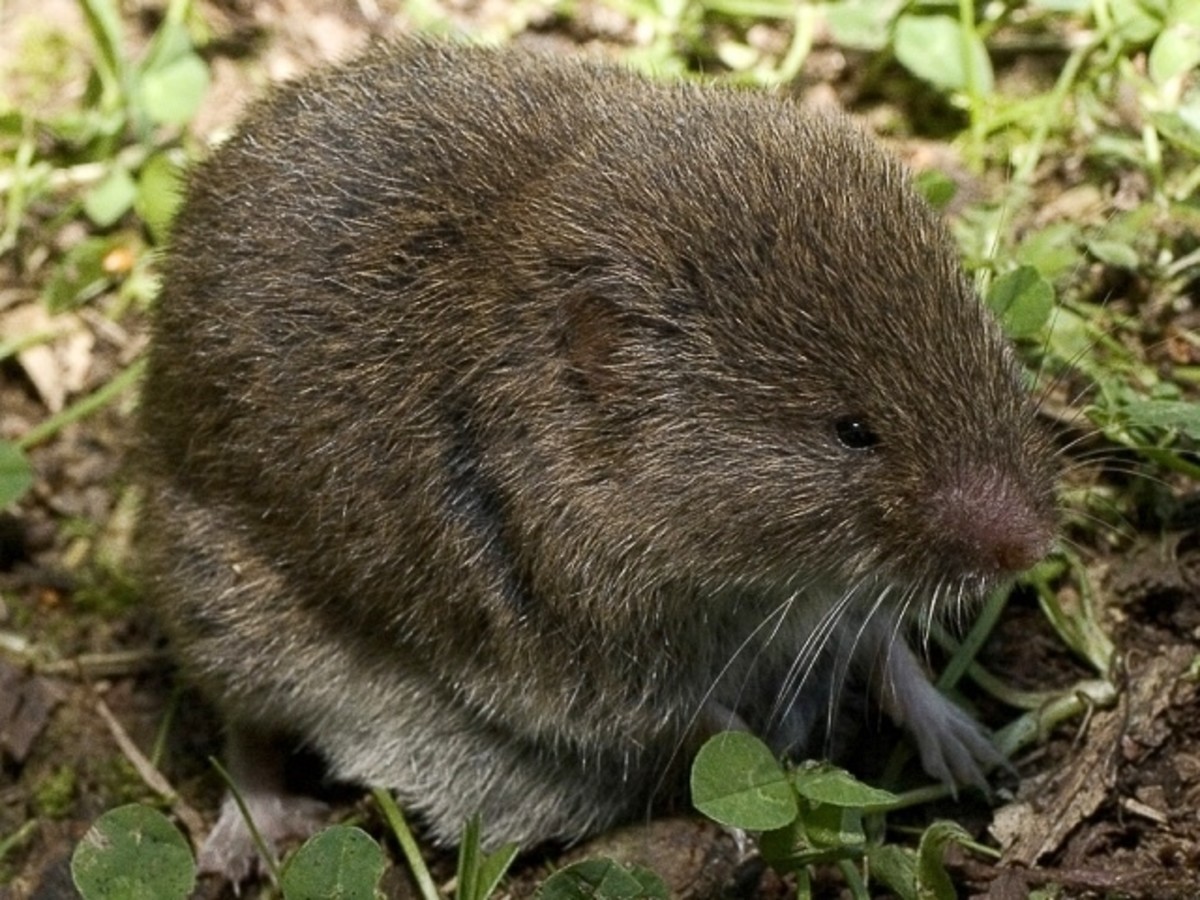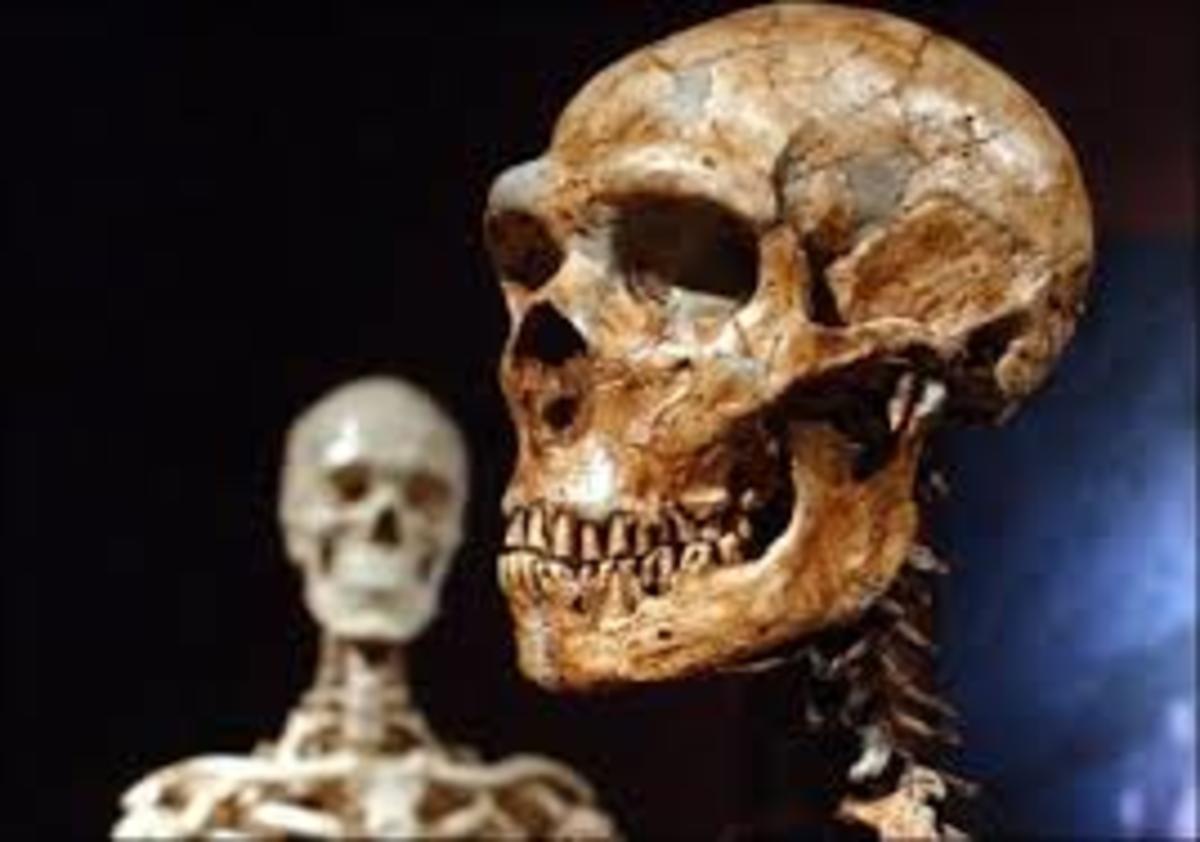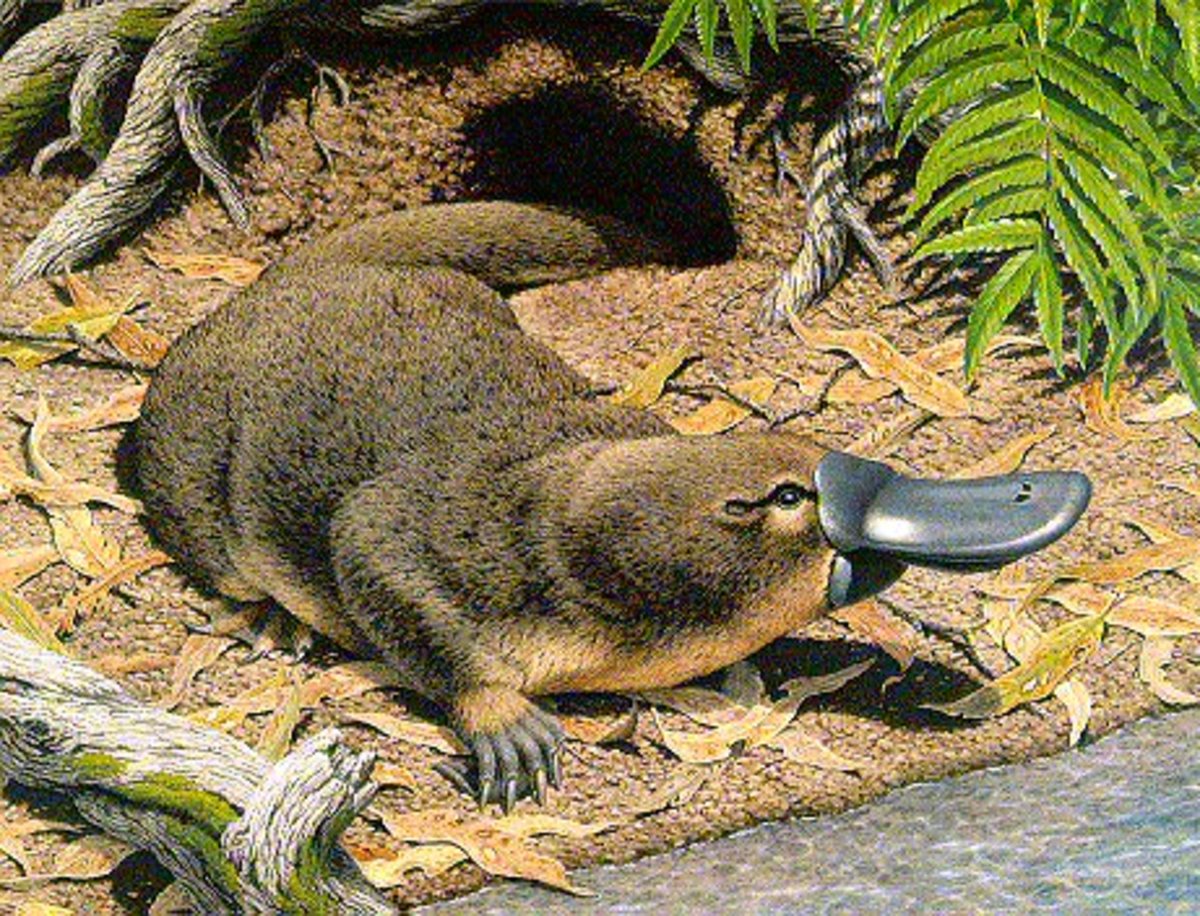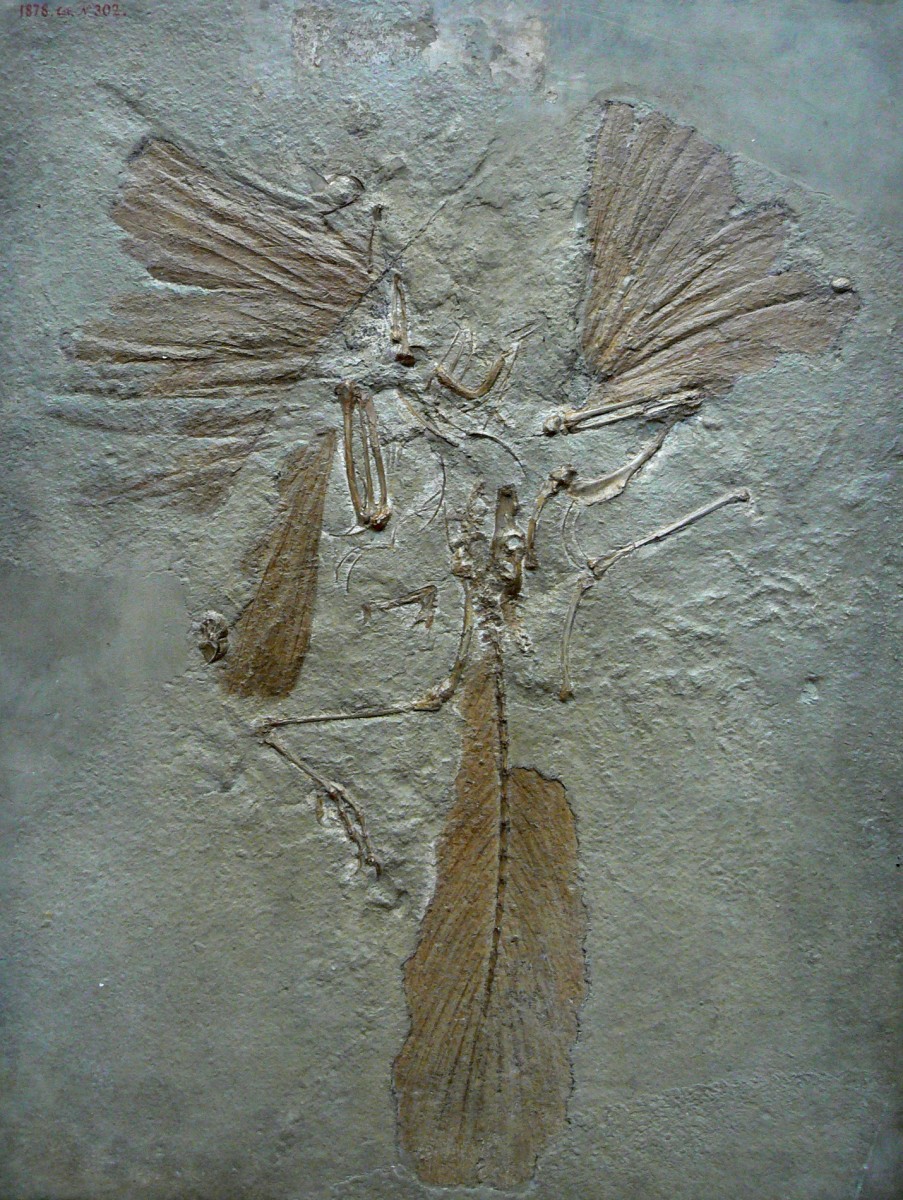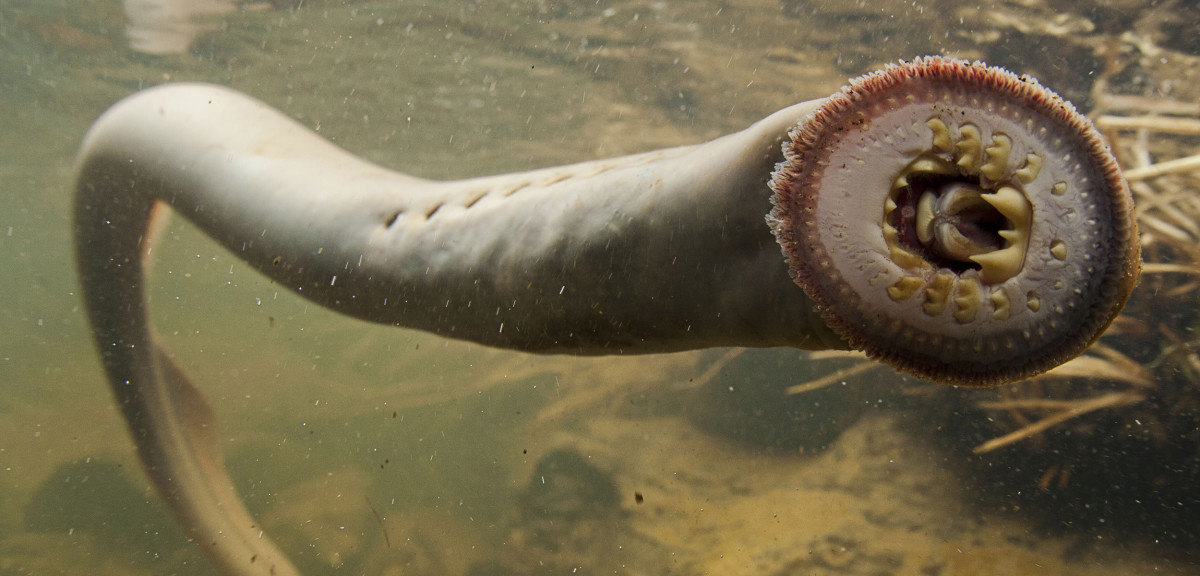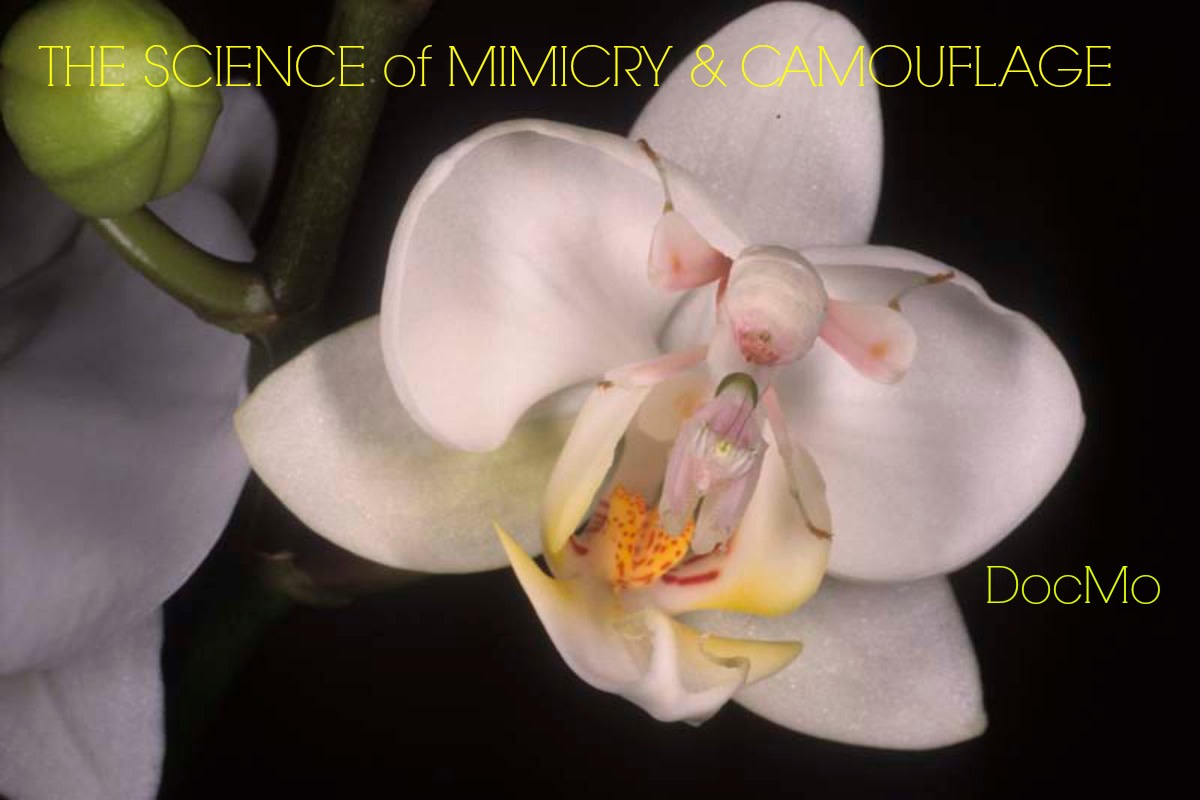The Platypus and Evolution
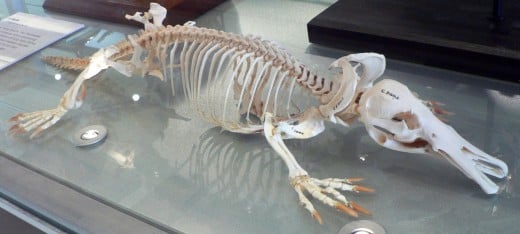
Abstract
The duck-billed platypus, Ornithorhynchus anatinus, is a semi-aquatic monotreme with a combination of reptilian, mammalian, and unique characteristics. Although the animal is warm blooded and lactates, which are mammalian features, it also lays eggs and has a cloaca like a bird or a reptile. Additionally, the platypus has ten sex chromosomes, with one X homologous to the mammalian X and another X analogous to the bird Z chromosome. These features indicate that the last common ancestor between monotremes and mammals may have been a transitional species in the evolution from reptiles to mammals. Thus, the platypus and its freshwater habitat should be protected and studied in order to better understand evolution.
Introduction
The duck-billed platypus, Ornithorhynchus anatinus, is a semi-aquatic monotreme native to Australia that has perplexed and fascinated scientists for hundreds of years. From its discovery in the 1790s (Hall) up to today, the platypus’ strange features, which appear to be a combination of bird and mammal, have sparked debate and excitement. Initially, the bill on the platypus caused some scientists to question if the animal was actually a hoax (Hall). After determining that the platypus was, in fact, real, scientists then insisted that the creature was viviparous, as one would expect a mammal to be (Hall). From there, discovery after discovery was made about the platypus, involving everything from how it reproduces and how its sex is determined to how it gathers food and how it lives. Recent technology, allowing analysis of platypus DNA, has further increased understanding of the platypus and where it fits on the evolutionary tree.
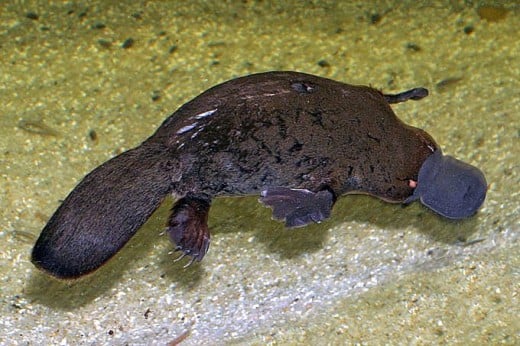
Body
Over the years, researchers have found more and more characteristics that make the platypus unique. Starting with morphology, the platypus is a brown, furry creature that grows up to about a foot and a half long (Society of Vertebrate Paleontology). Their four feet are webbed with claws allow them swim, forage, and defend their habitats within Australia’s freshwater lakes and streams (Hall). On their hind legs, the platypus has a venomous spur. Human nerve cells, as well as those of other animals, are sensitive to his venom, which causes severe pain in the victim (American Chemical Society). The platypus also has a flat, wide, beaver-like tail that helps it swim. On the face of the platypus is a duck-like bill. The platypus loses its teeth as it reaches maturity, so an adult has no teeth in the bill – instead, the teeth are replaced by horny pads which allow the platypus to chew its food (Hall). The bill also has an electro-sensory system that allows the platypus to find prey underwater while their eyes, ears, and nostrils are closed (Warren). Platypodes can eat over half of their body weight in food daily, which includes a variety of worms, crawfish, and frogs (Hall).
Moving to reproduction, things get even weirder. All platypodes have a cloaca, which is a single opening for excretion and reproduction (Hall). Males lack a scrotum and have internal testes (Warren). The ova within the females are very small, approximately 4 mm in diameter, and the female lays eggs instead of giving birth to live young (Warren). Once the eggs hatch, they are fed by the female’s lactation, which comes out of the platypus’s skin, as it does not have nipples (Warren). Platypodes are very secretive about their reproduction, though, which makes it difficult to observe the full process from breeding to egg laying.
The platypus creates its home by digging burrows into the banks of the stream or lake in which they live (Hall). The entrance to the chambers are underwater, in order to keep their burrow concealed and protected from predators (Hall). Platypodes generally have two distinct burrows – a short one to live in normally, and a long one for nesting and raising young. Breeding season begins in July and runs until October, after which the female lays one to three eggs in the nest (Hall). She incubates the eggs with her tail, and after about 10 days, the baby platypodes hatch. For the next three to four months, the babies are kept in the nest, feeding off of their mother’s milk, until the grow to about 30 cm and become furry (Hall). At that point, usually in January, the babies leave the nest and begin foraging on their own.
Using newer technology, scientists have been able to discover even more about the platypus. The branch within the tree of life that became platypodes likely diverged from other branches between 160 to 210 million years ago (Warren). The most recent common ancestor between the platypus and the echidna, the only other surviving monotreme, was around 21.2 million years ago (Warren). Recently, scientists also discovered new findings by looking at the genes of a platypus. The most extraordinary find was that the platypus has ten sex chromosomes, five Xs and five Ys (Pennisi). This is very unique and can play a key role in helping scientists understand the sex chromosomes of other species.
Synthesis
All of these interesting traits in the platypus add up to create a strange picture – an animal that seems to be half reptilian and half mammalian. Obviously, evolution doesn’t work quite so cleanly as that. However, monotremes did diverge before what is known today as mammals and marsupials, so it would make sense that the platypus retained some characteristics of its reptilian ancestors while holding some characteristics of the mammals and marsupials that would come later.
Of characteristics that the platypus retained from its reptilian ancestors, reproduction seems to be the most obvious and important. The discovery that the platypus lays eggs was extremely significant, as it made people question whether the creature was a mammal or some kind of new animal, since usually only reptiles and birds lay eggs like a platypus. The large amount of yolk in the egg is even similar to the yolk in bird eggs (Hall). In addition, the cloaca is a reptilian feature, as most mammals and marsupials have separate holes for excrement and reproduction. Both the cloaca and the eggs of the platypus are remnants of a reptilian ancestor.
The platypus also contains features that are similar to mammals and marsupials, meaning that the last common ancestor between all three groups most likely carried these traits, as well. The platypus is warm blooded, furry, and mostly looks like a mammal. Female platypodes also lactate, which is a huge indicator of a mammal. However, the lactation of a platypus is a little bit different from that of a regular mammal because the platypus lacks real nipples, so the milk comes from a “mammary patch” on the mother’s skin (Warren). Even so, the production of nutritious milk is very significant in defining what a platypus is and where it falls relative to other animals.
Some traits of the platypus are unique, not obviously shared with either reptiles and birds or mammals. One example of this is the bill on the platypus’ face. Although it looks similar to a duck, the bill has evolved independently and has no relation to that of a duck, nor to any other animal we know of. Another example is the venomous spur on the hind leg of the platypus. When the platypus genome was sequenced, it was revealed that although some reptiles are venomous, the venom of the platypus evolved separately (Kita et al.). The platypus is not alone as a non-reptilian venom producer, though, as some ancient mammals such as shrews can also produce venom (Kita et al.). These traits are interesting because they represent characteristics that either evolved within the platypus lineage, or were present in the last common ancestor between monotremes and mammals but were subsequently lost.
One very significant platypus trait that connects both mammals and reptiles is their sex chromosomes. Of the ten sex chromosomes in a platypus, the largest of the Xs is homologous to the human X chromosome (Grutzner). Close to the other end of the chain that makes up the complicated sex chromosome sorting pattern lies another X, which is homologous to the Z chromosome in birds (Grutzner). This discovery is hugely important in helping scientists understand the transition from the ZW sex chromosomes in birds to the XY sex chromosomes in mammals. Whereas before this was found, there was a gap in the jump between sex-determining systems, now there is a snapshot into how organisms progressed from one system to the other through evolution.
Recently, a tooth from an extinct platypus species, Obdurodon tharalkooschild, was found. The tooth indicates that the creature lived between 5 to 15 million years ago and was more than double the length of its living cousin (Society of Vertebrate Paleontology). It most likely ate bigger prey than platypodes today, such as lungfish and turtles (Society of Vertebrate Paleontology). This finding was significant because there is little fossil evidence for platypus ancestors, so this helps scientists explore some possibilities of where the platypus lineage could have branched off.
Overall, the platypus is an exceptional candidate for helping us understand the link between reptiles and mammals. Platypodes are the descendants of what was most likely a transition animal between mammals and reptiles, and the fact that it is still alive and exhibits some traits from both categories is exciting. Knowing which traits the platypus’ last common ancestor had on the tree of life lets scientists determine when those traits evolved and when some were lost. The platypus is currently considered “vulnerable”, as its habitat is threatened by destruction by humans, water pollution, and various diseases (Warren). It is vital that we commit to preserving their habitat and studying them further. As our technology improves, who knows what other secrets the platypus could unlock?
Works Cited
American Chemical Society. "Unlocking the mystery of the duck-billed platypus' venom." ScienceDaily. ScienceDaily, 15 January 2010. <www.sciencedaily.com/releases/2010/01/100113172254.htm>.
Grutzner, Frank, Willem Rens, Enkhjargal Tsend-Ayush, Nisrine El-Mogharbel, Patricia C. M. O’Brien, Russell C. Jones, Malcolm A. Ferguson-Smith, & Jennifer A. Marshall Graves. 2004. “In the platypus a meiotic chain of ten sex chromosomes shares genes with the bird Z and mammal X chromosomes.” Nature. 432: 913-917.
Hall, Brian K. 1999. “The Paradoxical Platypus.” Bioscience. 49.3: 211-18.
Kita, Masaki, David StC. Black, Osamu Ohno, Kaoru Yamada, Hideo Kigoshi, and Daisuke Uemara. 2009. “Duck-Billed Platypus Venom Peptides Induce Ca2 Influx in Neuroblastoma Cells.” Journal of the American Chemical Society. 131 (50): 18038. DOI:10.1021/ja908148z
Pennisi, Elizabeth. 2004. “Platypus X-Files,” Science, [Online], URL: http://news.sciencemag.org/biology/2004/10/platypus-x-files, October 26, 2004.
Society of Vertebrate Paleontology. "Fossil of largest known platypus discovered in Australia." ScienceDaily. ScienceDaily, 4 November 2013. <www.sciencedaily.com/releases/2013/11/131104152715.htm>
Warren, Wesley C., LaDeana W. Hillier, Jennifer A. Marshall Graves, Ewan Birney, Chris P. Ponting, Frank Grutzner, Katherine Belov, Webb Miller, Laura Clarke, Asif T. Chinwalla, et al. 2008. “Genome analysis of the platypus reveals unique signatures of evolution.” Nature. 453: 175-183.
Related Reading
© 2016 ReverieMarie


